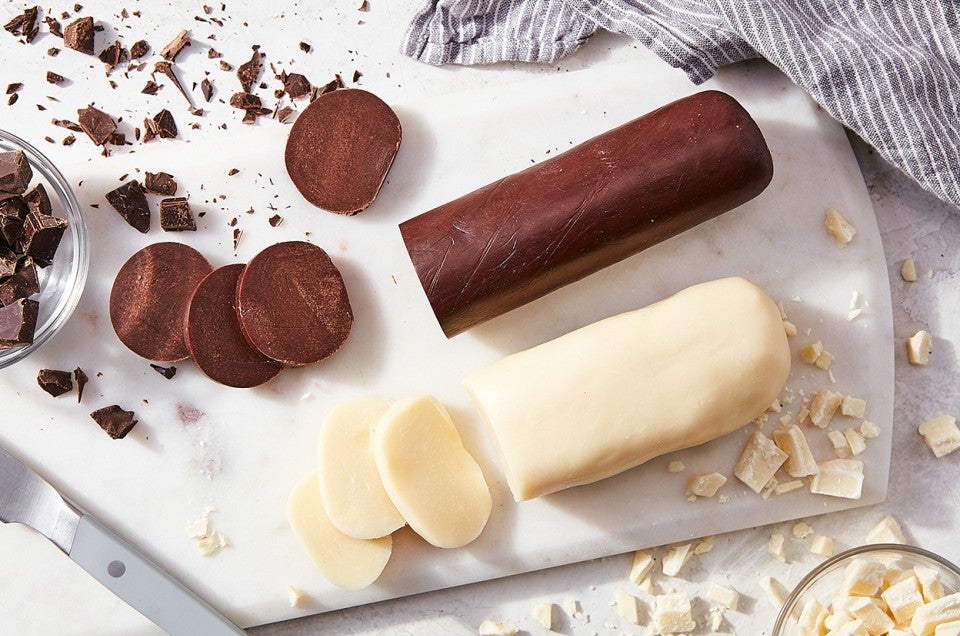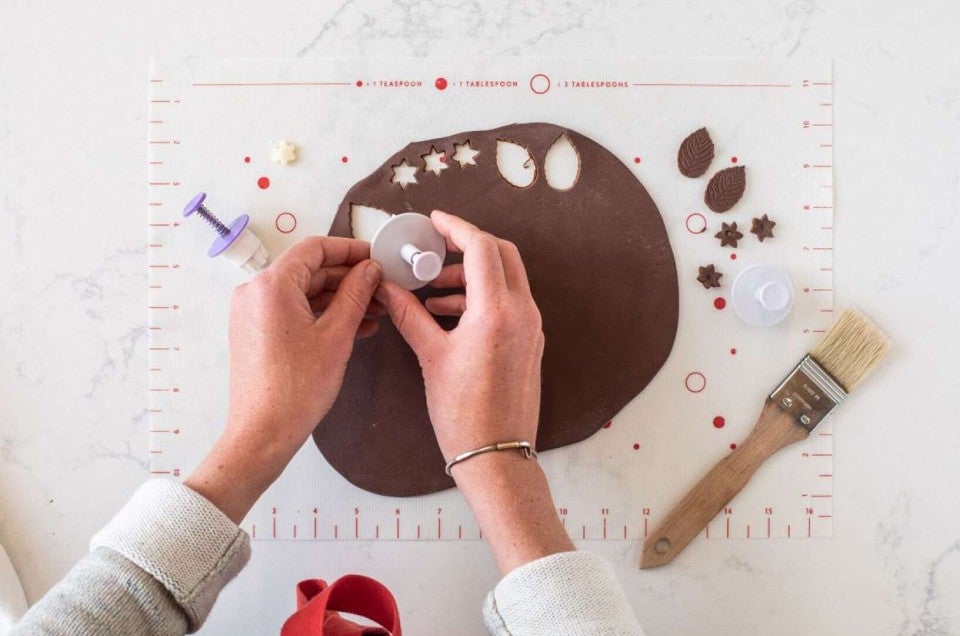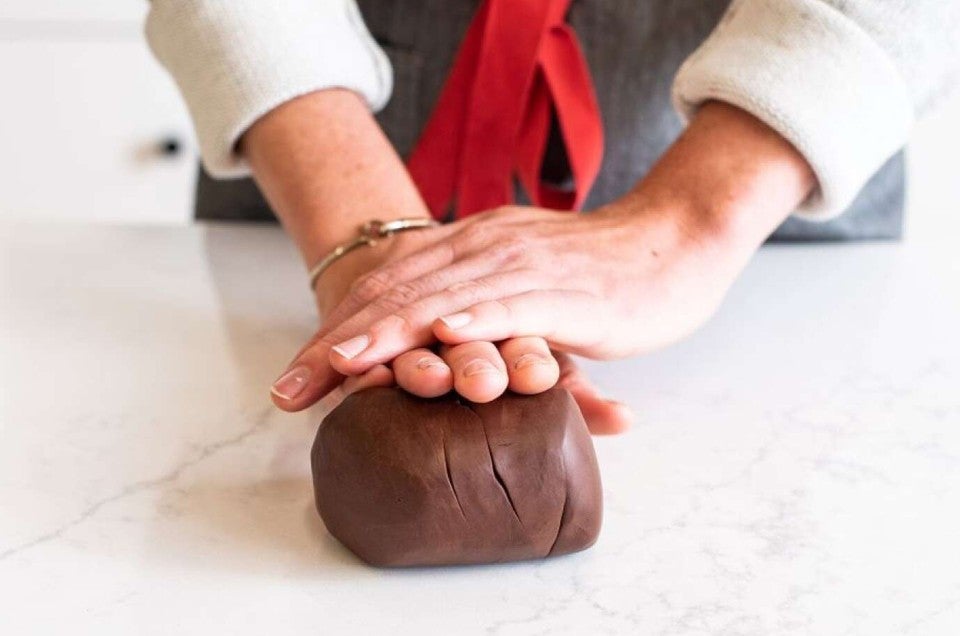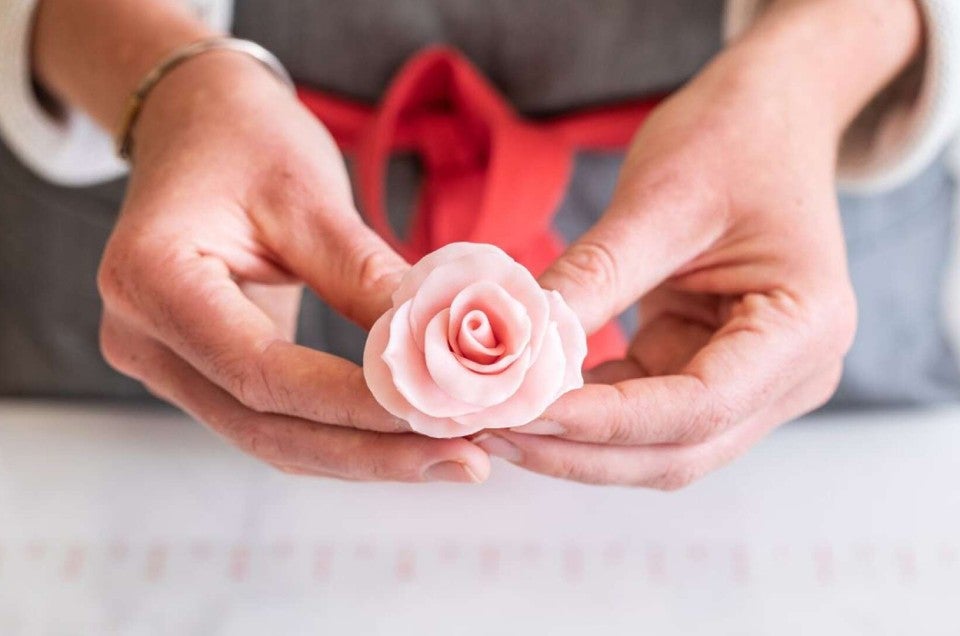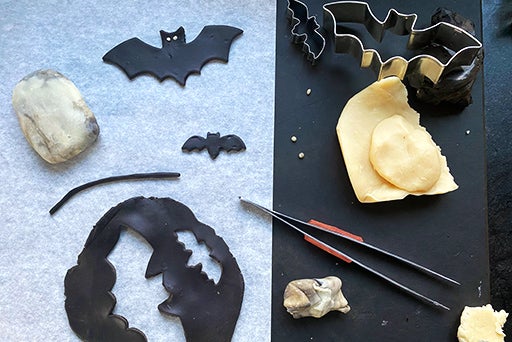Modeling Chocolate
Modeling chocolate is simple to make and fun to work with; once mixed and rested it has the consistency of a Tootsie Roll. When kneaded, the warmth of your hands makes it pliable enough to roll, cut into shapes, or form into flowers or other designs. It can be made with dark or white chocolate, tinted for your desired effect, and is much tastier than traditional gum paste.
